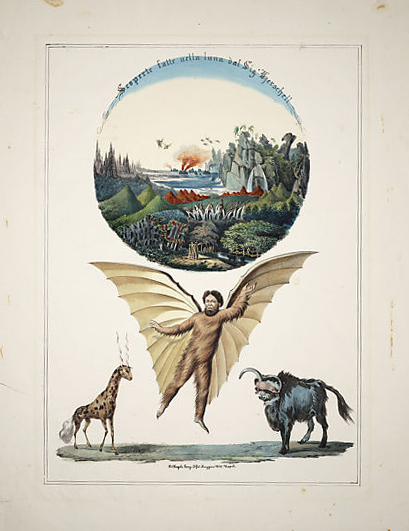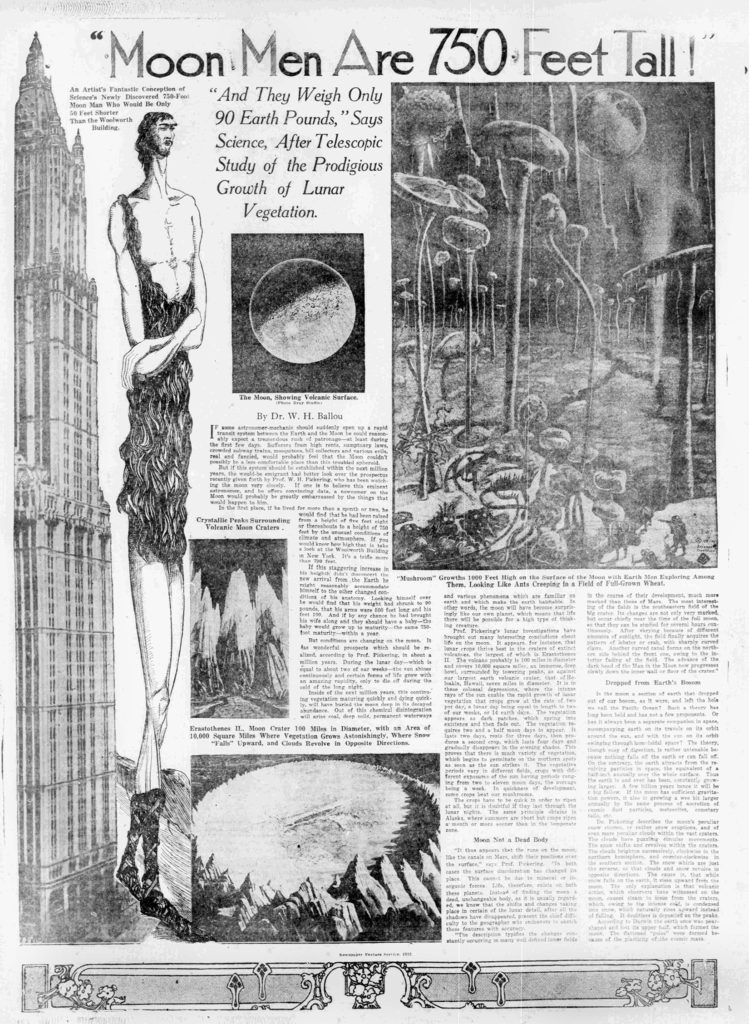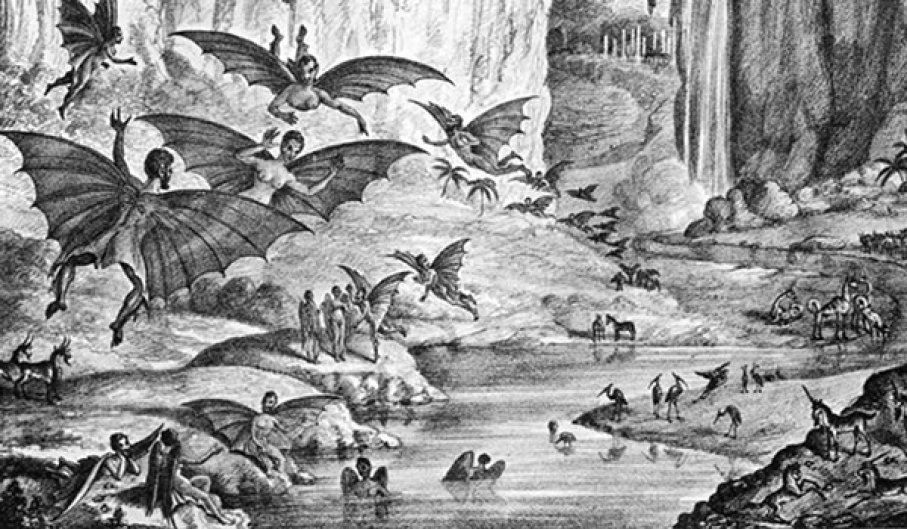This year marked the 50th anniversary of mankind’s first steps on the moon. But long before Neil Armstrong and Buzz Aldrin landed on the lunar surface, it was believed that other beings were already there.

The Great Moon Hoax of 1835 inspired artists, like Leopoldo Galluzzo, who created these lunar flora and fauna in 1836. Image from the Smithsonian Institution Libraries, Washington, D.C.
For example, in 1835, the world feverishly read news stories about an entire race of human-like winged people living on the moon. It became known as the Great Moon Hoax, and indeed, it was great. It all began with an article in the Tuesday, August 25, edition of The New York Sun, stating that renowned astronomer Sir John Frederick William Herschel (who named seven moons of Saturn and four moons of Uranus) had observed life on our satellite. Wondrous forms of flora were joined by a monstrous blue bearded unicorn, tailless beavers that walked on their hind legs, lived in huts, and built campfires, and the aforementioned bat-men. The ruse lasted one week.
In 1909, Professor Giudice, an Italian scientist, suggested that the moon could support life despite having no water or atmosphere. He believed, according to reports, that “beings differently formed from ourselves should lead active lives in lunar regions, no conditions of natural life upon earth having been yet shown to wholly exclude animate existence.”
By the early 1920s, Harvard professor, William H. Pickering, who had previously explored ways to contact intelligent life on Mars, challenged the notion that the moon was lifeless.
Pickering believed that markings observed on the face of the moon were caused by areas of vegetation—including mushroom-like growths—that sprouted up when the sun warmed the surface. These patches of vegetation, Pickering explained, “shift positions over the surface like the canals on Mars. In both cases the surface of discoloration has changed its place. This cannot be due to mineral or inorganic force. Life, therefore, exists on both planets. Thus we find a living world at our doors, where life in some respects resembles that on Mars but is utterly unlike anything on our own planet world.”

Giant men on the moon, as reported in the South Bend News Times, May 7, 1922.
A visitor to the moon, it was believed, would experience a remarkable growth spurt within a month’s stay. As one newspaper reported, such a person would “find that he had been raised from a height of five feet eight or thereabouts to a height of 750 feet by the unusual conditions of climate and atmosphere. … Looking himself over he would find that his weight had shrunk to 90 pounds.”
Granted, Armstrong and Aldrin were only on the moon’s surface for hours, not a month. Had they grown to 750 feet, their spacesuits would’ve torn apart and the suddenly giant astronauts would’ve never made the return trip to Earth with Michael Collins.
Though no humans have walked on the moon since 1972, life is once again believed to exist on the moon. As reported in Wired, a crew of tardigrades (Earth’s most powerful creatures—known to survive being boiled at 149° C) was shipwrecked when the Israeli Beresheet probe crashed on the surface in April 2019. The tiny passengers were part of a payload, which included human DNA. It belonged to a nonprofit called Arch Mission Foundation, whose mission is to create “a backup of planet Earth.”
It’s believed the tardigrades will survive on the moon for years. Perhaps they’ll grow, as Pickering suggested, and greet the 2024 Artemis manned mission.






